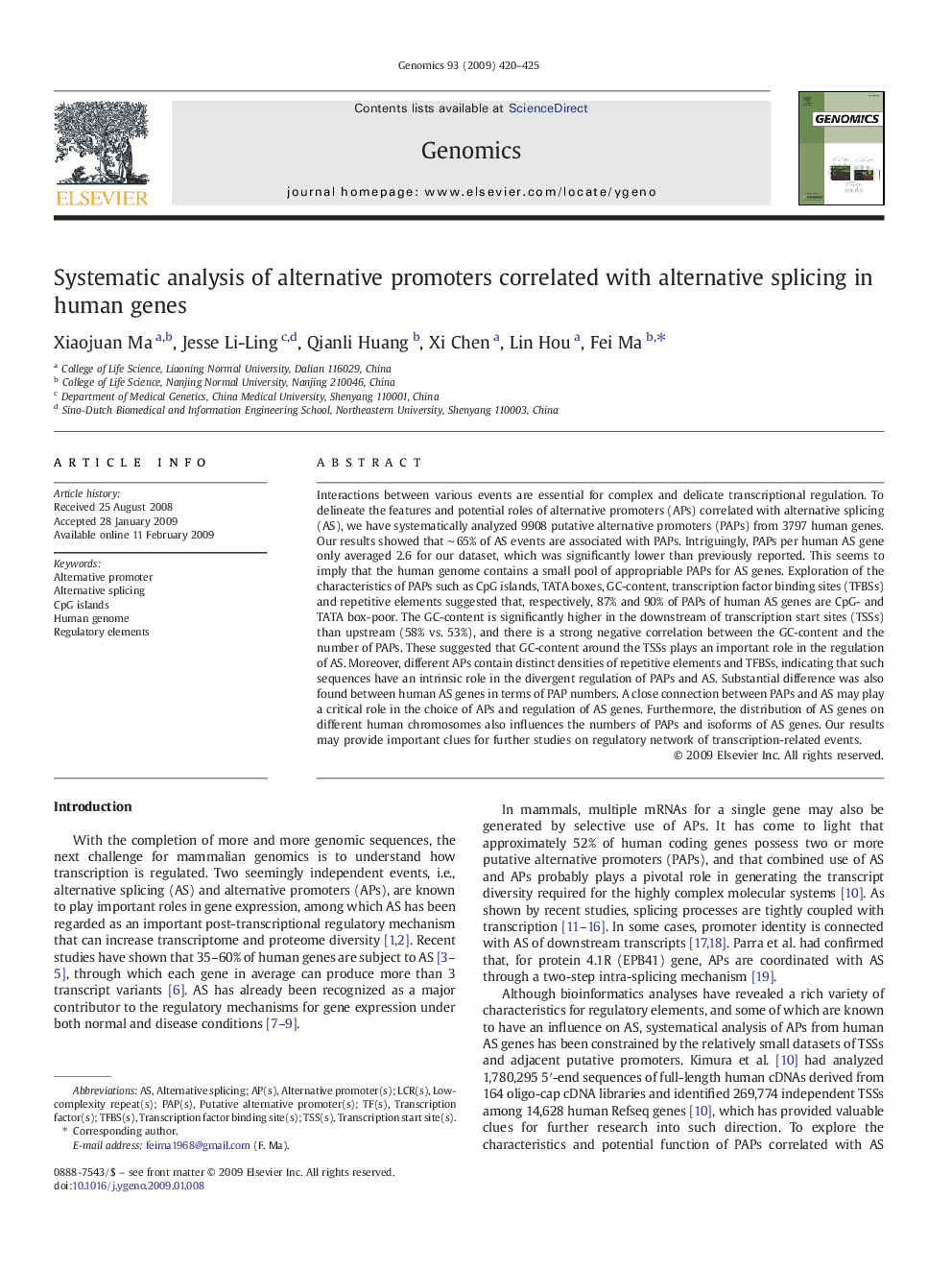| Article ID | Journal | Published Year | Pages | File Type |
|---|---|---|---|---|
| 2821234 | Genomics | 2009 | 6 Pages |
Interactions between various events are essential for complex and delicate transcriptional regulation. To delineate the features and potential roles of alternative promoters (APs) correlated with alternative splicing (AS), we have systematically analyzed 9908 putative alternative promoters (PAPs) from 3797 human genes. Our results showed that ∼ 65% of AS events are associated with PAPs. Intriguingly, PAPs per human AS gene only averaged 2.6 for our dataset, which was significantly lower than previously reported. This seems to imply that the human genome contains a small pool of appropriable PAPs for AS genes. Exploration of the characteristics of PAPs such as CpG islands, TATA boxes, GC-content, transcription factor binding sites (TFBSs) and repetitive elements suggested that, respectively, 87% and 90% of PAPs of human AS genes are CpG- and TATA box-poor. The GC-content is significantly higher in the downstream of transcription start sites (TSSs) than upstream (58% vs. 53%), and there is a strong negative correlation between the GC-content and the number of PAPs. These suggested that GC-content around the TSSs plays an important role in the regulation of AS. Moreover, different APs contain distinct densities of repetitive elements and TFBSs, indicating that such sequences have an intrinsic role in the divergent regulation of PAPs and AS. Substantial difference was also found between human AS genes in terms of PAP numbers. A close connection between PAPs and AS may play a critical role in the choice of APs and regulation of AS genes. Furthermore, the distribution of AS genes on different human chromosomes also influences the numbers of PAPs and isoforms of AS genes. Our results may provide important clues for further studies on regulatory network of transcription-related events.
